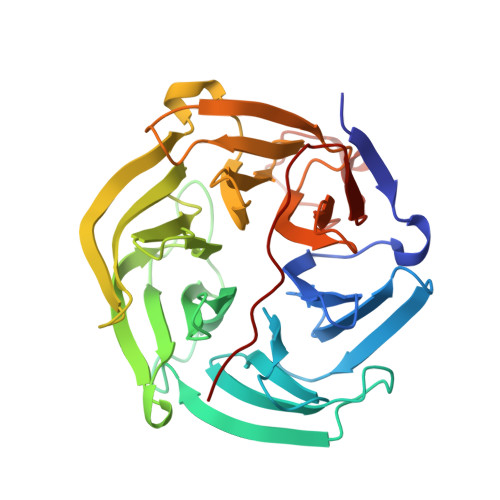Development of a dose-limiting data collection strategy for serial synchrotron rotation crystallography
Hasegawa, K., Yamashita, K., Murai, T., Nuemket, N., Hirata, K., Ueno, G., Ago, H., Nakatsu, T., Kumasaka, T., Yamamoto, M.(2017) J Synchrotron Radiat 24: 29-41
- PubMed: 28009544
- DOI: https://doi.org/10.1107/S1600577516016362
- Primary Citation of Related Structures:
5GX1, 5GX2, 5GX3, 5GX4, 5GX5 - PubMed Abstract:
Serial crystallography, in which single-shot diffraction images are collected, has great potential for protein microcrystallography. Although serial femtosecond crystallography (SFX) has been successfully demonstrated, limited beam time prevents its routine use. Inspired by SFX, serial synchrotron crystallography (SSX) has been investigated at synchrotron macromolecular crystallography beamlines. Unlike SFX, the longer exposure time of milliseconds to seconds commonly used in SSX causes radiation damage. However, in SSX, crystals can be rotated during the exposure, which can achieve efficient coverage of the reciprocal space. In this study, mercury single-wavelength anomalous diffraction (Hg-SAD) phasing of the luciferin regenerating enzyme (LRE) was performed using serial synchrotron rotation crystallography. The advantages of rotation and influence of dose on the data collected were evaluated. The results showed that sample rotation was effective for accurate data collection, and the optimum helical rotation step depended on multiple factors such as multiplicity and partiality of reflections, exposure time per rotation angle and the contribution from background scattering. For the LRE microcrystals, 0.25° was the best rotation step for the achievable resolution limit, whereas a rotation step larger than or equal to 1° was favorable for Hg-SAD phasing. Although an accumulated dose beyond 1.1 MGy caused specific damage at the Hg site, increases in resolution and anomalous signal were observed up to 3.4 MGy because of a higher signal-to-noise ratio.
Organizational Affiliation:
Japan Synchrotron Radiation Research Institute, 1-1-1 Kouto, Sayo 679-5198, Japan.


















